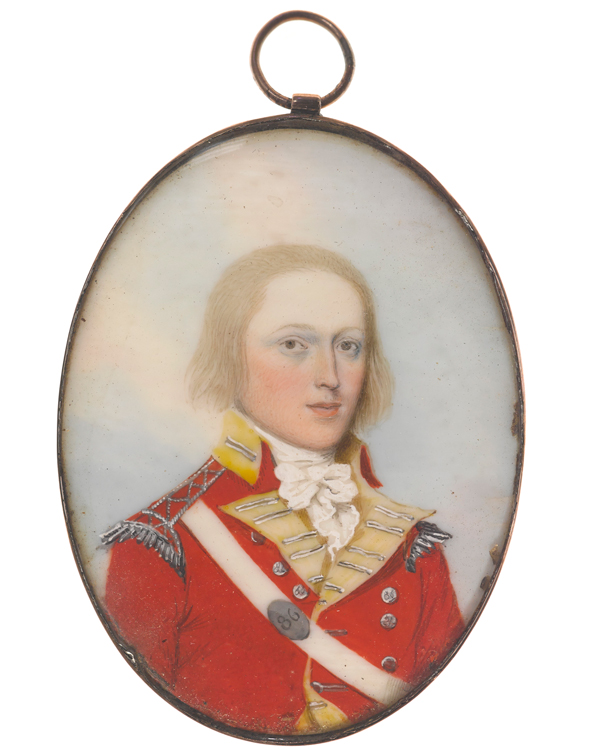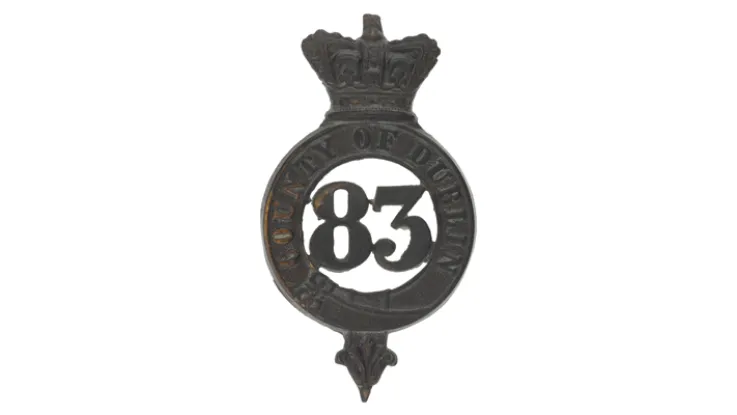Origins
In February 1793, Revolutionary France declared war on Britain. In October that year, volunteers from Yorkshire, Lancashire and Cheshire gathered at Shrewsbury to form a new unit under Major-General Sir Cornelius Cuyler.
The following year, it was turned into a regular line regiment with the numeral 86. It was assigned Shropshire as its county and posted to Ireland.
Revolutionary war
Throughout 1795, it served as marines on ships operating in the English Channel, the North Sea and the Mediterranean. Another infantry unit operating as marines at this time was the 118th Foot. It disbanded in October 1795 and sent its men to join the 86th.
In 1796, the regiment moved to the Cape of Good Hope, now operating as infantry once again. It moved on to India in 1799, sending three of its companies to Ceylon (now Sri Lanka) in 1800 and six to Egypt in 1801.
By the end of the year, the rest of the regiment’s companies were also operating in Egypt, landing at Suez and Kosseir on the Red Sea coast, and marching 90 miles across the desert to Cairo.
In 1802, the regiment returned to India for 17 years, fighting in the Second Maratha War (1803-06) and briefly deploying to Goa. It then helped capture the Île Bonaparte (now the island of Réunion) in 1810 and Isle de France (now Mauritius) in 1811.
Quiz
Which of the following was a nickname of the 86th (Royal County Down) Regiment?
Legend has it that when the regiment began recruiting in Ireland many of its earliest recruits were very tall.
19th century
The Napoleonic period also saw the regiment twice change its regional affiliation. In 1806, it was assigned the Irish province of Leinster. Then, in 1812, it was affiliated with County Down and its depot was established in Belfast.
The latter change also brought it the ‘Royal’ prefix. This was in recognition of its part in the capture of the French islands mentioned above.
In 1813, the regiment raised a 2nd Battalion, which never left England. This was disbanded the following year after Napoleon’s first abdication.
Returning to India in 1816, the 86th then fought in the Pindar War (1817-18) before moving to Ceylon to join the 3rd Kandyan War (1817-18). In 1827, it went on its first West Indian posting, which took in several British possessions and lasted 10 years.
India
In 1842, the regiment returned to India, meaning it was already there on the outbreak of the Indian Mutiny (1857-59). It took part in the campaign in Rajputana and Central India, including the storming of Jhansi in 1858, where it won four Victoria Crosses.
It returned to England in 1859 and spent the next two decades on garrison duty at home, in Gibraltar, Mauritius, the Cape of Good Hope and Bermuda.
Legacy
In 1881, it amalgamated with the 83rd (County of Dublin) Regiment of Foot to form The Royal Irish Rifles.
Regimental museums
The National Army Museum works with a network of Regimental and Corps Museums across the UK to help preserve and share the history and traditions of the Army and its soldiers.
Discover more about the 86th (Royal County Down) Regiment of Foot by visiting the Royal Ulster Rifles Museum in Belfast.











